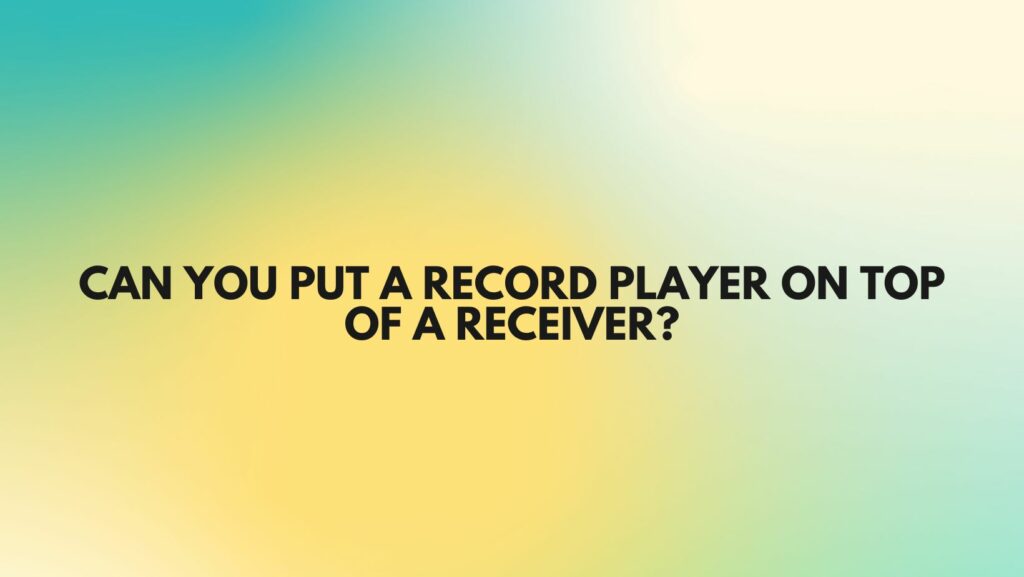As vinyl experiences a resurgence in popularity, enthusiasts often find themselves contemplating the optimal arrangement for their turntable within their audio setup. A common query arises: Can you put a record player on top of a receiver? In this article, we will explore the considerations, benefits, and potential challenges associated with placing a record player on your audio receiver, offering insights to help you strike the right balance between functionality and aesthetics in your audio haven.
Understanding the Components:
A record player, or turntable, is a precision instrument designed to play vinyl records, utilizing delicate components to produce high-quality sound. On the other hand, an audio receiver serves as the central hub for managing audio sources, amplifying signals, and directing them to speakers. Combining these components involves careful consideration of their individual functionalities and potential interactions.
Considerations for Placing a Record Player on a Receiver:
- Vibration Control:
- Vibrations can adversely affect the performance of a turntable. Placing it on top of a receiver introduces the risk of vibrations from the receiver’s electronics, potentially impacting the delicate stylus tracking on the record. Use isolation pads or feet to minimize vibrations and ensure optimal playback.
- Weight Distribution:
- Check the weight capacity of your receiver to ensure it can support the added load of the turntable. Exceeding weight limits can lead to structural damage, affecting the performance of both components.
- Heat Dissipation:
- Both record players and receivers generate heat during operation. Ensure that the combined setup allows for sufficient ventilation to prevent overheating. Avoid covering ventilation ports on the receiver or turntable.
- Accessibility and Aesthetics:
- Consider the layout for easy access to controls on both the turntable and receiver. Additionally, assess the visual appeal of the stacked setup, ensuring it complements the overall design of your audio space.
Benefits of Stacking:
- Space Efficiency:
- Placing the record player on top of the receiver can be a space-saving solution, especially in setups where space is limited. This arrangement can create a streamlined look and is often visually appealing.
- Convenient Cable Management:
- Stacking the components can facilitate easier cable management, providing a tidy and organized appearance. Ensure that the arrangement does not compromise the integrity of the cables or impede functionality.
Drawbacks and Alternatives:
- Vibration and Interference:
- Despite efforts to minimize vibrations, stacking components may still result in interference. If concerns persist, consider alternative setups, such as placing the turntable on a dedicated, vibration-resistant shelf adjacent to the receiver.
- Accessibility Issues:
- Placing the record player on top of the receiver might hinder easy access to controls, impair the visibility of the turntable, or make changing records more challenging. Ensure that the arrangement allows for convenient operation and maintenance.
Conclusion:
The decision to place a record player on top of a receiver involves a delicate balance between aesthetics and optimal performance. By addressing concerns related to vibration, weight distribution, and accessibility, you can create a setup that not only looks great but also delivers a superior audio experience. Whether you choose to stack your components or explore alternative arrangements, the key is to strike a harmonious balance that enhances both the functionality and visual appeal of your vinyl-listening sanctuary.

